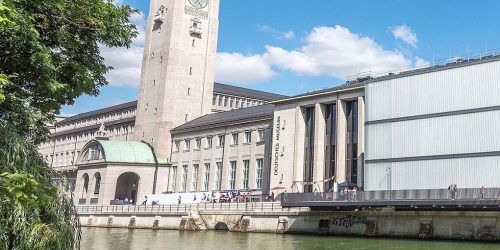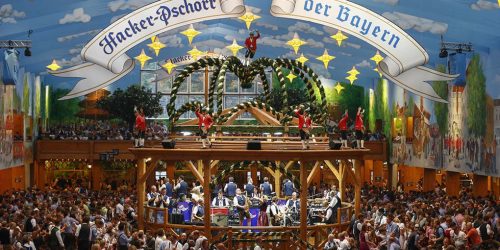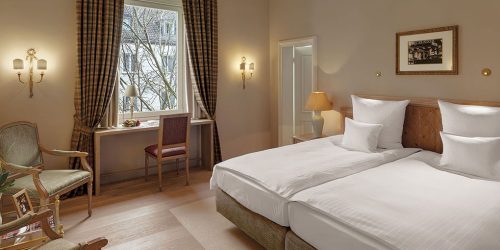Exploring Munich’s Rich History: Must-Visit Museums and Historic Sites
Munich, the capital of Bavaria, is a city steeped in history and culture, boasting a wealth of museums and historic sites that offer insights into its fascinating past. From royal palaces to world-class art collections, Munich’s museums showcase a diverse range of exhibits that appeal to history enthusiasts, art lovers, and curious travelers alike. I’ll share my firsthand experiences exploring Munich’s rich history, highlighting must-visit museums and historic sites, along with my favorite exhibits and recommendations for visitors.
The Munich Residenz
Location: Residenzstraße 1, 80333 Munich, Germany
Geographical Setting:
Nestled in the heart of Munich’s historic city center, the Munich Residenz is an architectural masterpiece that served as the former royal palace of the Bavarian monarchs. Its strategic location makes it easily accessible from anywhere in the city, whether you’re arriving by public transportation or on foot.
Overview:
Stepping into the Munich Residenz feels like stepping back in time to the days of Bavaria’s illustrious rulers. As I wandered through its opulent halls and lavish chambers, I was captivated by the grandeur and splendor of the royal residence. From the magnificent Antiquarium, Europe’s largest Renaissance hall, to the stunning Court Church of All Saints, every corner of the palace exudes regal elegance and historical significance.
Favorite Works:
- The Antiquarium: This monumental hall, adorned with intricate stucco work and ceiling frescoes, serves as a testament to the wealth and power of the Bavarian rulers. I was mesmerized by the sheer scale and beauty of the Antiquarium, which once housed the royal collection of antiquities.
- The Treasury: Delving into the Treasury of the Munich Residenz felt like embarking on a journey through time, as I marveled at the priceless treasures and artifacts on display. Highlights included the dazzling Bavarian Crown Jewels and the intricately crafted regalia of the Holy Roman Empire.
- The Cuvilliés Theatre: As a lover of the performing arts, I was enchanted by the exquisite beauty of the Cuvilliés Theatre, a Rococo gem tucked away within the Munich Residenz. From its ornate gilded interiors to its richly decorated stage, every detail of the theater exudes elegance and sophistication.
Recommended Works:
- The Residence Museum: This comprehensive museum offers a fascinating glimpse into the daily life of Bavaria’s royalty, with its meticulously recreated period rooms and opulent furnishings. Visitors can explore the living quarters, ceremonial halls, and private chambers of the royal family, gaining insights into their lifestyles and traditions.
- The Herkulessaal: Located within the Munich Residenz, the Herkulessaal is a magnificent concert hall renowned for its superb acoustics and stunning Baroque architecture. Attending a performance or concert in this historic venue is a truly unforgettable experience, allowing visitors to immerse themselves in the cultural heritage of Bavaria.
- The Hofgarten: Adjacent to the Munich Residenz, the Hofgarten is a charming Renaissance-style garden that offers a tranquil oasis in the heart of the city. Visitors can stroll along its manicured pathways, admire the ornamental fountains and sculptures, or simply relax amidst the lush greenery.
Service:
The Munich Residenz provides excellent visitor services, including guided tours, audio guides, and information desks staffed by knowledgeable staff members. The palace also offers special exhibitions, workshops, and cultural events throughout the year, catering to visitors of all ages and interests.
Pros:
- Rich Cultural Heritage: The Munich Residenz is steeped in history and culture, offering a fascinating insight into Bavaria’s royal past and artistic legacy.
- Architectural Splendor: From its magnificent halls to its ornate gardens, the palace boasts stunning architecture and craftsmanship that will leave visitors in awe.
- Educational Value: The Munich Residenz provides a valuable educational experience for visitors, with its informative exhibits, guided tours, and interactive displays.
Cons:
- Crowds: The Munich Residenz can get crowded, especially during peak tourist seasons and on weekends, which may detract from the overall visitor experience.
- Admission Fees: While entry to certain areas of the palace is included with the basic ticket, access to special exhibitions and guided tours may require additional fees.
Route:
From Munich Airport, travelers can take the S-Bahn train to Marienplatz station, which is located within walking distance of the Munich Residenz. Alternatively, the palace is easily accessible by tram, bus, or taxi from various parts of the city.
Ticket Information:
General admission tickets to the Munich Residenz start at €7.00 for adults and €4.50 for concessions, with discounts available for students, seniors, and groups. Admission includes access to the Residence Museum, the Treasury, and the Cuvilliés Theatre, as well as guided tours and audio guides.
Opening Hours:
The Munich Residenz is open daily from 9:00 AM to 6:00 PM, with extended hours until 8:00 PM on Tuesdays.
Booking Platform:
Tickets for the Munich Residenz can be purchased online through the palace’s official website or at the ticket counter upon arrival. Special packages, guided tours, and combination tickets are also available for purchase.
The Deutsches Museum
Location: Museumsinsel 1, 80538 Munich, Germany
Geographical Setting:
Located on Museum Island in the heart of Munich, the Deutsches Museum is easily accessible from the city center, with public transportation options including the U-Bahn, S-Bahn, and tram.
Overview:
As one of the world’s largest science and technology museums, the Deutsches Museum offers a comprehensive overview of human ingenuity and innovation across various disciplines. From aviation and space exploration to physics, chemistry, and engineering, the museum’s vast collection of exhibits and interactive displays provides a captivating journey through the history of science and technology.
Favorite Works:
- The Aviation and Aerospace Exhibition: As an aviation enthusiast, I was thrilled to explore the Deutsches Museum’s extensive collection of aircraft and spacecraft, which includes historic planes, gliders, and rockets. Highlights of the exhibition include the iconic Messerschmitt Bf 109 fighter plane and a full-scale replica of the V-2 rocket.
- The Energy and Environment Gallery: This thought-provoking gallery examines the complex relationship between humans and the environment, exploring topics such as renewable energy, climate change, and sustainable development. Interactive exhibits allow visitors to learn about alternative energy sources, conservation efforts, and environmental challenges facing our planet.
- The Physics and Mathematics Department: Delving into the world of physics and mathematics at the Deutsches Museum was a truly enlightening experience, as I discovered the fundamental principles governing the universe. From demonstrations of electromagnetic phenomena to interactive displays on chaos theory and fractals, the museum offers a fascinating insight into the mysteries of science.
Recommended Works:
- The Space Exploration Exhibition: Journey to the stars and beyond in the Deutsches Museum’s Space Exploration Exhibition, which showcases the history of space travel and the exploration of the cosmos. Visitors can marvel at models of spacecraft, lunar rovers, and satellites, as well as learn about the challenges and triumphs of space exploration.
- The Transportation Department: Explore the evolution of transportation at the Deutsches Museum’s Transportation Department, which features exhibits on automobiles, trains, ships, and bicycles. Highlights include vintage cars, steam locomotives, and a full-scale replica of the Wright Flyer, the world’s first powered aircraft.
- The Earth and Universe Gallery: Embark on a journey through time and space in the Deutsches Museum’s Earth and Universe Gallery, where visitors can learn about the origins of the universe, the formation of planets, and the search for extraterrestrial life. Interactive displays, multimedia presentations, and hands-on activities make learning about astronomy and cosmology engaging and fun.
Service:
The Deutsches Museum offers a range of visitor services, including guided tours, audio guides, and educational programs for schools and groups. The museum also provides facilities such as cafes, gift shops, and wheelchair access to ensure a comfortable and enjoyable experience for all visitors.
Pros:
- Educational Value: The Deutsches Museum provides a wealth of educational resources and interactive exhibits that cater to visitors of all ages and backgrounds.
- Technological Innovation: From historic inventions to cutting-edge research, the museum celebrates human achievement and innovation in science and technology.
- Interactive Exhibits: Hands-on activities, demonstrations, and simulations engage visitors and encourage active participation in the learning process.
Cons:
- Size and Scope: The Deutsches Museum is vast and may require multiple visits to fully explore its extensive collection of exhibits and galleries.
- Crowds: The museum can get crowded, especially during peak tourist seasons and on weekends, which may affect the overall visitor experience.
Route:
From Munich Airport, travelers can take the S-Bahn train to Isartor station and transfer to tram line 16 or 18, which stops directly in front of the Deutsches Museum. Alternatively, the museum is within walking distance from Marienplatz, Munich’s central square.
Ticket Information:
General admission tickets to the Deutsches Museum start at €12.00 for adults and €4.00 for children, with discounts available for students, seniors, and families. Admission includes access to all exhibitions, guided tours, and interactive displays.
Opening Hours:
The Deutsches Museum is open daily from 9:00 AM to 5:00 PM, with extended hours until 8:00 PM on Thursdays.
Booking Platform:
Tickets for the Deutsches Museum can be purchased online through the museum’s official website or at the ticket counter upon arrival. Special discounts and combination tickets are available for groups, schools, and families.

The Glyptothek
Location: Königsplatz 3, 80333 Munich, Germany
Geographical Setting:
Situated on Königsplatz, one of Munich’s most prominent squares, the Glyptothek is centrally located and easily accessible from anywhere in the city. Public transportation options include the U-Bahn, tram, and bus.
Overview:
The Glyptothek is a stunning neoclassical museum dedicated to ancient sculpture, housing a remarkable collection of Greek and Roman artworks dating from the Archaic period to the Roman Empire. Its magnificent architecture, serene gardens, and exquisite sculptures make it a must-visit destination for art lovers and history enthusiasts alike.
Favorite Works:
- The Barberini Faun: One of the Glyptothek’s most iconic sculptures, the Barberini Faun is a masterpiece of ancient Roman art that depicts a sleeping satyr. I was captivated by the sculpture’s dynamic pose, lifelike expression, and exquisite detailing, which showcase the skill and craftsmanship of the ancient sculptors.
- The Ludovisi Gaul: Another highlight of the Glyptothek’s collection is the Ludovisi Gaul, a marble statue depicting a wounded Gallic warrior
. As I admired the sculpture’s powerful depiction of pain and suffering, I couldn’t help but be moved by its emotional depth and realism.
- The Medusa Rondanini: The Medusa Rondanini is a hauntingly beautiful sculpture of the mythological Gorgon Medusa, carved in marble during the Roman Imperial period. Its serene expression and flowing hair create a sense of eerie tranquility, inviting contemplation and reflection.
Recommended Works:
- The Aegina Pediments: Explore the Glyptothek’s collection of ancient Greek sculpture, including the famous Aegina Pediments, which once adorned the Temple of Aphaia on the island of Aegina. These stunning marble reliefs depict scenes from Greek mythology, such as the battle between Greeks and Trojans, and showcase the skill and artistry of ancient Greek sculptors.
- The Nereid Monument: Discover the Nereid Monument, a magnificent marble tomb from ancient Lycia (modern-day Turkey) adorned with intricately carved reliefs and sculptures. This remarkable monument provides insights into the funerary practices and artistic traditions of the ancient world, offering a window into the past.
- The Temple of Apollo Epikourios: Admire the architectural splendor of the Temple of Apollo Epikourios, a well-preserved Doric temple from ancient Bassae (modern-day Greece). Its majestic columns, sculpted friezes, and serene setting make it a captivating sight that transports visitors back in time to the glory days of ancient Greece.
Service:
The Glyptothek offers excellent visitor services, including guided tours, audio guides, and educational programs for schools and groups. The museum also provides facilities such as cafes, gift shops, and wheelchair access to ensure a comfortable and enjoyable experience for all visitors.
Pros:
- Artistic Masterpieces: The Glyptothek boasts a world-class collection of ancient sculpture, showcasing the finest examples of Greek and Roman artistry and craftsmanship.
- Architectural Beauty: The museum’s neoclassical architecture and tranquil gardens provide a serene backdrop for the sculptures, enhancing the overall visitor experience.
- Cultural Enrichment: Visiting the Glyptothek offers a unique opportunity to immerse oneself in the art, history, and culture of ancient Greece and Rome, fostering a deeper appreciation for the classical world.
Cons:
- Limited Collection: While the Glyptothek’s collection is impressive, it may not offer the same breadth and diversity as larger museums with more extensive holdings of ancient art and artifacts.
- Interpretive Materials: The museum’s interpretive materials, including signage and labels, may be limited in languages other than German, which could pose challenges for international visitors.
Route:
From Munich Airport, travelers can take the S-Bahn train to Karlsplatz (Stachus) station and transfer to tram line 27 or 28, which stops directly in front of the Glyptothek. Alternatively, the museum is within walking distance from Munich Central Station and other key landmarks in the city center.
Ticket Information:
General admission tickets to the Glyptothek start at €6.00 for adults and €4.00 for concessions, with discounts available for students, seniors, and groups. Admission includes access to all galleries, temporary exhibitions, and guided tours.
Opening Hours:
The Glyptothek is open Tuesday to Sunday from 10:00 AM to 5:00 PM, with extended hours until 8:00 PM on Wednesdays.
Booking Platform:
Tickets for the Glyptothek can be purchased online through the museum’s official website or at the ticket counter upon arrival. Special discounts and combination tickets are available for families, students, and groups.

Munich’s rich history is beautifully preserved and presented in its museums and historic sites, offering visitors an unparalleled opportunity to immerse themselves in the cultural heritage and artistic legacy of Bavaria. As a passionate traveler and history enthusiast, I feel truly privileged to have experienced these remarkable institutions firsthand, and I eagerly anticipate my next visit to Munich to further explore its wealth of cultural treasures.







